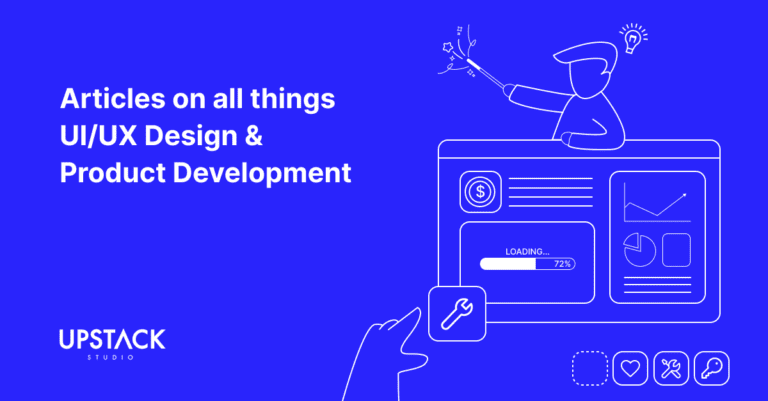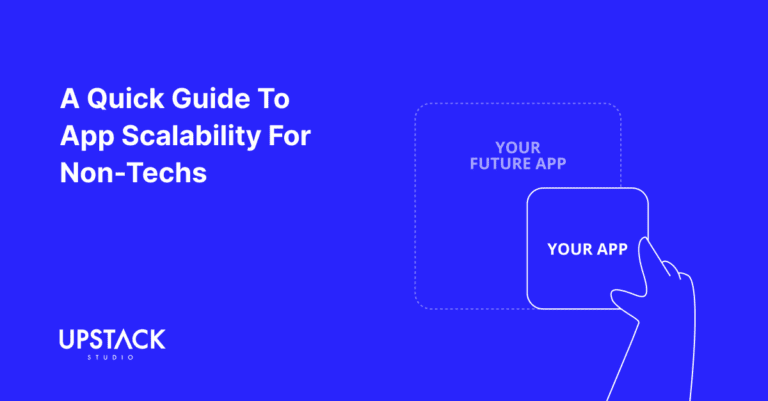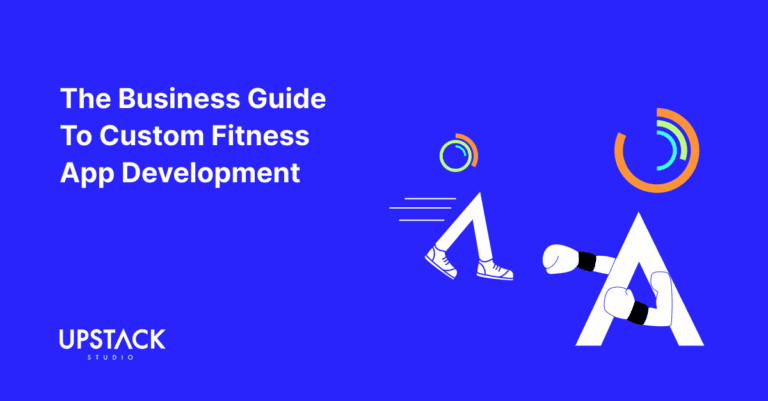No matter how a developer estimates app development costs, it’s ultimately based on two opposite pricing models:
- Fixed based on an agreed scope with no changes
- Variable based on how the project evolves
The lack of a dominant pricing strategy across the industry shows there’s no one size fits all solution and most developers operate in between with a variation of the two.

As usual, the best pricing model for you as a client is a big old ‘it depends.’
This guide is our attempt to help you find the right one for your needs as we cover::
- Fixed and variable pricing models
- Common variations based on each
- What Upstack Studio has chosen and why
- A reminder to consider other software development cost factors!
Course, if you’re made of cash and just want to build, skip this and get in touch with us directly.
Otherwise, let’s begin.
Fixed Pricing Model

A developer that charges based on a pure fixed price will take clients through a rigorous requirements-gathering process, after which they’ll finalize a product roadmap.
Every feature in that roadmap is factored into the quote.
Once agreed, that’s what you pay for and what we deliver—no more, no less.
In theory, this makes it easier to estimate total costs before committing to development.
Deposit+Handover

This is the most common result of a fixed fee pricing model; pay the developer a percentage of the final estimate for them to start work, then the remainder upon completion.
The specific percentage requested for upfront payment varies, but generally shouldn’t be higher than 30% except for the smallest of projects.
Milestone-Based Payment

Since developers can anticipate key milestones in advance, they and clients can break up payments into several blocks tied to achieving those milestones.
Clients like this even more as they only pay for what’s been done, while developers remain motivated to finish the project, especially if payments are back-loaded with later milestones carrying higher fees.
Tradeoffs
A pricing model that favors predictability usually gives developers the short end of the stick.
Yes, clients have little room for mid-development changes, but developers risk losing money if requirements are underestimated and it ends up taking longer.
So much depends on how accurately they can estimate development costs at the start.
When to Use It
A fixed pricing model works best for projects that are:
- Small or short-term
- Clearly defined
- Low in uncertainty
- Led by experienced clients
- Based on proven concepts
All of the above points to a software project whose scope and timeline are limited and predictable enough to estimate accurately at the start.
Common examples:
- Minimum viable product (MVP) with a fixed feature list
- Prototype app for internal testing or investor demos
- Simple apps built on existing templates
- Feature upgrades or interface redesigns for existing software
Variable Pricing Model

A pure variable pricing model charges based on actual time and resources spent—so total costs vary based on how the project evolves over time.
Rather than fixed upfront commitments, the client and developer allow developing priorities and ideas to dictate the scope and corresponding development costs.
Developers prefer this option because in software development, flexibility often leads to better-quality software.
Plus we generally get paid more this way 🙂
Hourly Rate

The most common version of variable pricing, developers track hours spent on development, and clients are billed periodically, usually at the end of a development cycle.
This makes it easy to pivot based on feedback or new insights, but needs trust and transparency as clients cannot feel they are being taken advantage of..
Monthly Rate

Instead of going into granular hours, the development agencies offer themselves as a dedicated software team for a fixed period on a monthly retainer.
It’s flexible, predictable in cost per month, and allows ongoing development without renegotiating contracts.
Tradeoffs
A variable pricing model flips the script, with clients now assuming greater risk.
The biggest drawback for developers is the additional reporting requirements that usually come with such arrangements–if you charge per hour, clients want to know where those hours went.
However, even if a developer prepares a detailed breakdown, doesn’t mean clients can tell if:
- Developer manhours are being utilized properly
- If they’re being charged unfairly
This is why trust is so important–good thing we’re software developers and not lawyers 🙂
When to Use It
A variable pricing model works best for projects that are:
- Long-term or ongoing
- Exploratory or evolving in scope
- Based on user feedback or rapid iteration
- Managed with agile methodology
- Run by clients who value flexibility over upfront certainty
Common examples:
- Startup apps still refining product-market fit
- Large enterprise systems requiring continuous updates
- SaaS platforms under active iteration and scaling
- Feature expansion projects that depend on real-world user data
Real World Software Development Pricing
In practice, many developers use a hybrid model combining the best of fixed and variable pricing, namely:
- A rough project estimate to set expectations and give clients a ballpark figure
- An upfront deposit to begin work, typically early-stage development
- Milestone / Sprint-based payments as the project progresses
- Flexibility on both sides to renegotiate if sudden requirements, or challenges arise
This way, everyone is equally inconvenienced, the way all deals should work 🙂
We’re kidding–this genuinely keeps both parties protected: Clients maintain visibility while developers aren’t boxed into potentially loss-making budgets.
Also, when developers aren’t incentivized to cut corners to stay within budget, they can prioritize building a superior product, though we understand this doesn’t matter all the time.
How Upstack Studio Charges
Our projects range from mobile to web apps and mobile-first sites, with the lower end covering MVP development:
- Mobile App Development: USD 35,000 – 100,000
- Web Development: USD 35,000 – 100,00
- Ongoing Support & Iteration: USD 3,000 – 10,000 per month
How do we actually arrive at those numbers?
Like we said earlier, it depends, and here’s how it works:
Initial Estimate & Deposit
We start by understanding your goals and must-have features for the software. Once we’ve scoped enough, we’ll share a rough cost estimate and request a 20–30% deposit to begin development.
Monthly Payments
For ongoing work, we use a monthly retainer model, where we act as your dedicated agile product team, with room for change if new ideas or challenges come up mid-project.
This hybrid model keeps both sides protected:
- You always know what’s being built and what you’re paying for
- We stay focused on creating a superior product
Our goal is to build something your users (and you) will love, then make you fall in love with us and sign up for our ongoing software support plan.
We’re all about that recurring revenue!
Other Factors Affect Development Costs!

Remember pricing model is just one piece of the software development cost puzzle, alongside:
- Native vs cross-platform development
- Feature complexity
- Level of custom UI / UX
- Team composition
- Developer hourly rate
These factors relate to one another in a sort of insidious matrix, so check out our app development cost breakdown to see how they work together to squeeze your wallet dry!
That said, if requirements are clear, a fixed price makes sense, especially for smaller projects.
Meanwhile, if you prefer a scope that evolves with feedback, a variable model gives you the freedom to adapt.
If you’re unsure which approach suits your custom software project, get in touch!
f you have a custom software project in mind and need help estimating ROI, get in touch with us and we’d be happy to help! Also, consider joining our mailing list for a one-stop resource on everything from SaaS validation to execution and promotion. Get a nifty list of questions to ask app developers when you sign up!
App Developer Interview Questions Template
Download this template now so you know exactly what to ask App Development Agencies! Let us know where should we send it through the form below.





